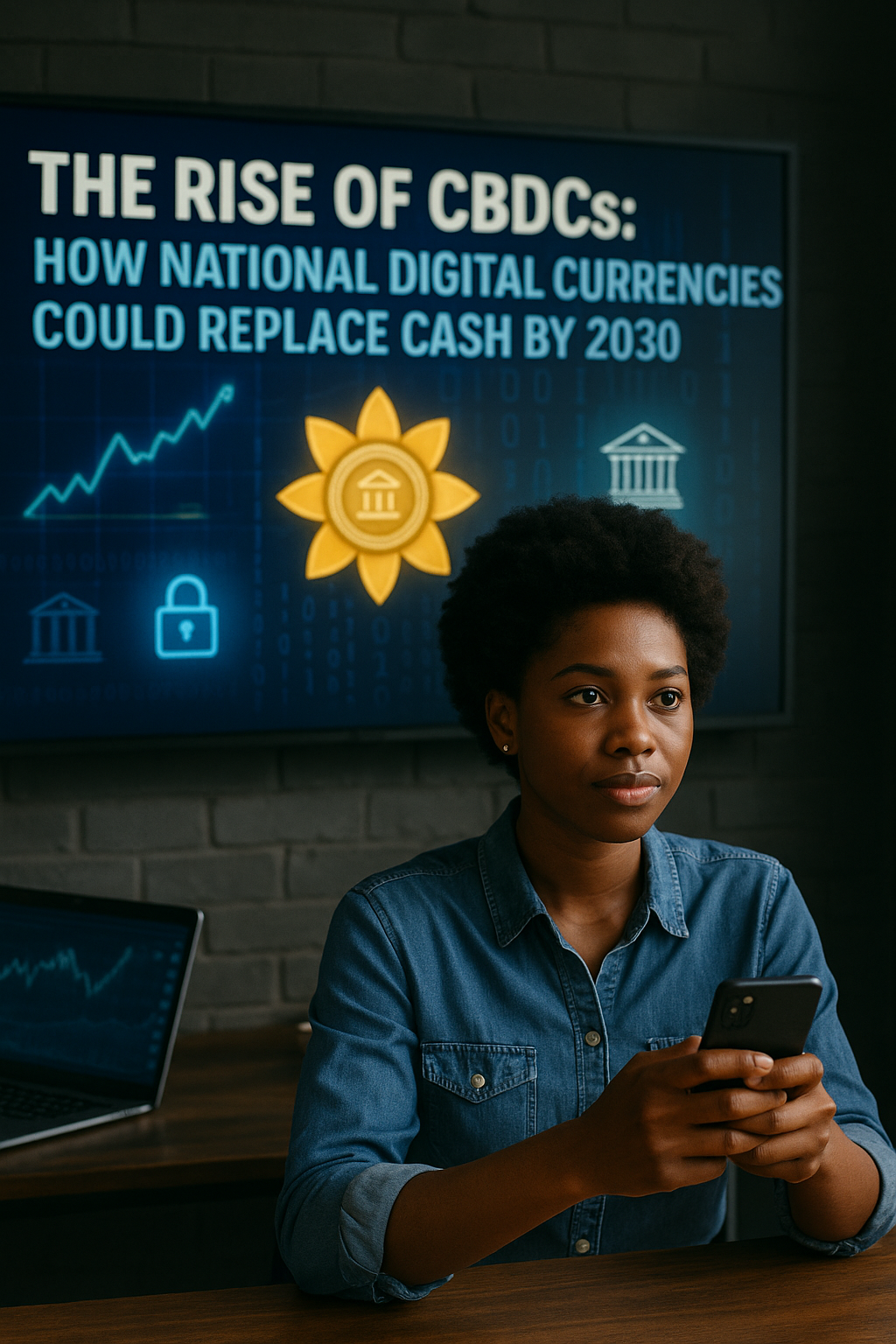Let’s be honest—when did you last pay for anything in cash that wasn’t at a carwash or your local "cash-only" mama mboga stand? Nowadays, even your grandma is asking for your M-Pesa number or saying, “Just send it to me.” As digital payments become the norm, central banks are cooking up their digital twist to keep up with the times.
Enter: CBDCs—Central Bank Digital Currencies.
They’re like Bitcoin’s clean-cut cousin who went to business school, works a government job, and always brings their charger.
So, what’s the deal with CBDCs, and could they replace cash by 2030? Let’s break it down—with a touch of humor, some real talk, and clear examples so your tech-averse uncle can finally understand what all the fuss is about.
What is a CBDC, and Why Should You Care?
CBDC stands for Central Bank Digital Currency, a digital version of a country’s official money, issued and backed by the central bank. Unlike Bitcoin or Ethereum, which are decentralized and a little... rebellious, CBDCs are all about structure, security, and central control.
It’s like if physical cash and your mobile money app had a baby, with a GPS tracker.
🔑 Key Features of CBDCs:
- Government-issued and backed by a central bank (unlike crypto).
- Stored in a digital wallet—on your phone, not in your jeans.
- Can be used without needing a traditional bank account.
- Regulated, traceable, and aimed at replacing physical cash.
Why Are Governments Getting in on the Digital Money Game?
Governments around the world are seeing the writing on the wall—or rather, the code on the blockchain. People are going digital, banks are going mobile, and cash is losing the popularity contest fast.
✨ Reasons for the CBDC Boom:
- Cash is so last season – It’s expensive to print, easy to lose, and just kinda... dusty.
- Financial inclusion – CBDCs can reach unbanked populations with just a smartphone.
- Fighting financial crime – With CBDCs, the government can trace illegal transactions (sorry, money launderers).
- Better policy control – They can instantly distribute stimulus or benefits straight to citizens, no middlemen.
Urban Humor Side Note: “Imagine the government sending you your tax refund directly into your phone wallet—no forms, no queues, no ‘come back tomorrow.’ Now that’s a plot twist we can all get behind.”
Real-Life Examples: Who’s Already Doing It?
🇨🇳 China – The Digital Yuan
China is already testing its Digital Yuan (e-CNY) in multiple cities. People are paying for groceries, transport, and even baozi with a tap of their phones—without needing Alipay or WeChat Pay.
🇳🇬 Nigeria – The eNaira
Nigeria launched the eNaira in 2021 to support financial inclusion and streamline government payments. The government’s goal? Make it easier for everyday folks to transact—whether they live in the city or a remote village.
🇪🇺 European Union – Digital Euro (Coming Soon)
The EU is working on a Digital Euro, planning to make digital payments secure, sovereign, and accessible even offline. That’s right—spending money with no internet? Now we’re talking next-level vibes.
Will CBDCs Replace Cash by 2030?
While full replacement is a stretch (especially in rural areas or economies that rely heavily on cash), CBDCs are definitely coming for the crown. By 2030, we’ll likely see:
- Widespread adoption in urban areas where mobile penetration is high.
- Government services integrated with CBDC platforms (hello, instant tax returns).
- Cash use declining to niche situations—think grandmas, boda boda riders, and suspiciously private "deals."
Urban Humor Side Note: “In 2030, your kid might ask what a wallet is. You'll be like, ‘That’s where we used to keep actual money before phones took over our lives.’”
What Could Go Wrong? Let’s Keep it Real
CBDCs aren’t all rainbows and mobile money. There are a few potential plot twists:
🕵️ Privacy Concerns
CBDCs are traceable, which means Big Brother could technically know how many late-night chicken wings you’ve been ordering.
🏦 Banking Disruption
If everyone stores money with the central bank, what happens to regular banks? They may need to evolve—or become digital dinosaurs.
🔌 Tech Dependence
What happens when your battery dies or the network’s down? You might be rich, but you’re still not buying that soda.
How to Prepare for the CBDC Future
- Get Digitally Savvy – Learn how digital wallets, QR codes, and mobile payments work.
- Stay Informed – Follow how your country is approaching CBDCs. Policies will vary.
- Protect Your Privacy – Know what data is collected and how it’s used.
- Teach Your Family – Help your folks understand digital money so they’re not left behind. (Yes, even Uncle Joe.)
Final Thoughts: Welcome to the Future (Sort of)
CBDCs are not just a trend—they’re a full-on financial revolution. They promise greater access, faster payments, and tighter security. But they also raise important questions about privacy, freedom, and the role of banks in our lives.
By 2030, your wallet might be an app, your paycheck might land in a government-issued digital account, and that crumpled 50 bob note in your drawer? Might belong in a museum.
Urban Humor Takeaway:
“Soon, telling someone you have money under the mattress might mean you forgot your phone on the bed. Welcome to the future, my people.”



Comments ()